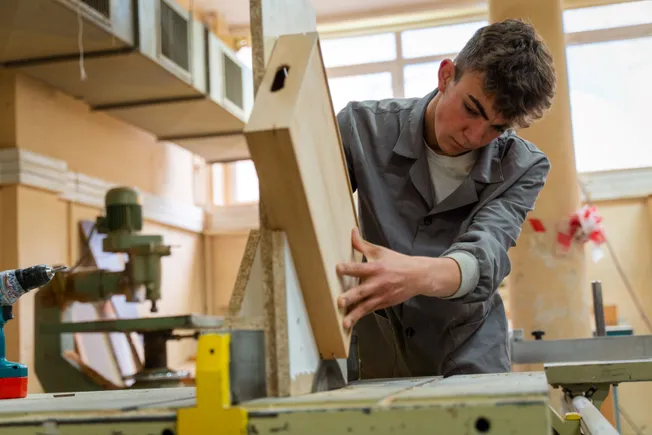Ratan Lal is a preconstruction professional for Atlanta-based construction services firm H.J. Russell and Co. with about 10 years of experience in project management. Opinions are the author’s own.
The construction industry has been the foundation of my professional life for over a decade. From multifamily housing to heavy civil infrastructure projects, I’ve contributed to spaces that shape how people live, work and connect.
But beyond blueprints, budgets and schedules, I’ve found a more lasting way to impact the future: Mentoring young people, particularly high school students, as they explore careers in the construction industry.
This work has become one of the most fulfilling aspects of my life. We’re not just building structures but building lives.
Why mentorship matters
Construction lies at the intersection of tradition and innovation. Though rooted in hands-on craftsmanship, the industry is embracing transformative technologies like virtual design and construction, drones and sustainable design.
However, construction still faces outdated perceptions. Many young people see it as a labor-intensive field with limited creativity, unaware of its vast innovation and leadership opportunities. At the same time, the industry is grappling with an aging workforce and a shrinking pipeline of new professionals.
Mentorship bridges this gap by connecting young minds to the possibilities in construction — opportunities to innovate, lead and literally build the future.

Ratan Lal
Permission granted by Ratan Lal
Through initiatives like the ACE Mentor Program, I’ve worked closely with high school students to reveal the layers of the construction industry. Each mentorship begins with an introduction to architecture, engineering and construction, using real-world examples to inspire curiosity.
Hands-on group activities are integral to the program. Students explore architectural concepts through massing sketch exercises and learn structural principles by building towers out of spaghetti and marshmallows.
They dive into problem-solving by designing protective devices for egg drop challenges. These engaging activities foster teamwork, critical thinking and decision-making while demonstrating the problem-solving nature of construction.
We also introduce them to industry software and tools, preparing them to navigate the digital transformation shaping construction.
Learning opportunities
One memorable activity is a mock construction planning exercise. Students collaborate to evaluate options, prioritize tasks and estimate project timelines. Watching them realize how their decisions shaped project outcomes was electrifying — it turned passive learners into confident decision-makers envisioning themselves as future leaders.
The program also features an annual project competition where students tackle real-world challenges like reimagining high school spaces or integrating carbon capture into construction. Participants balance design, functionality, budgets and timelines, which fosters collaboration, innovation and critical thinking.
At the program’s culmination, students present their projects at a gala, showcasing their ideas to mentors, peers and industry professionals. These events hone presentation skills, build confidence and provide invaluable networking opportunities.
Site visits to active construction projects further enrich the experience. Witnessing industry professionals at work and seeing the intricacies of large-scale projects leave lasting impressions. I’ll never forget a father’s gratitude during one such visit when he shared, “This is exactly what I wished I had growing up.”
Life lessons from mentorship
Mentorship is a two-way street. Although I aim to inspire, I constantly learn from the students I work with. Their enthusiasm, fresh perspectives and optimism remind me why I fell in love with this field.
For instance, students often ask about integrating renewable energy or optimizing space usage. Their questions challenge me to rethink traditional practices and stay informed on emerging trends. These exchanges prove that mentorship isn’t just about preparing students for the future — it’s about preparing the industry to meet their expectations.
Success in mentorship is measured not in square footage or budgets but in moments: the “aha” realization during a workshop, the excitement of a student visiting a construction site or the pride in seeing them receive scholarships to pursue construction-related degrees.
If you’re a construction professional, I urge you to consider mentorship. You don’t need decades of experience or a prestigious title — just a willingness to share your passion for the industry. A small investment of time can profoundly impact a young person’s future.
